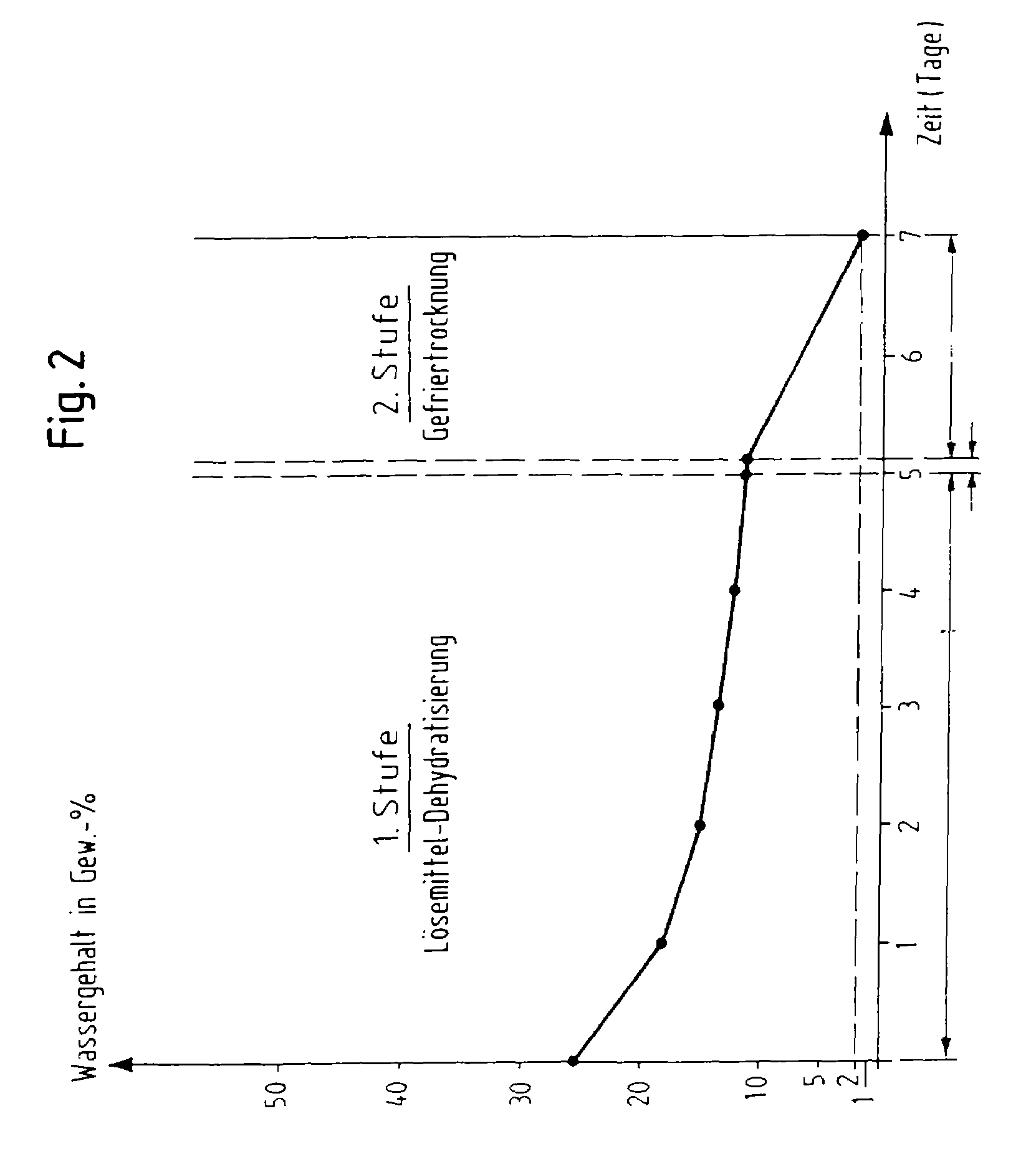Method for dehydrating biological tissue for producing preserved transplants
a biological tissue and preservation technology, applied in the field of dehydrating biological tissue for producing preserved transplants, can solve the problems of considerably shortening the preservation process, and achieve the effect of reducing the number of extraction steps with organic solvents, reducing the number of extraction steps, and ensuring preservation
- Summary
- Abstract
- Description
- Claims
- Application Information
AI Technical Summary
Benefits of technology
Problems solved by technology
Method used
Image
Examples
example 1
[0019]Dura mater is removed from the human body and liberated in a manner known to one skilled in the art from antigenic substances and enzymes. For preservation, the tissue parts cleaned in this manner are treated twice for six hours at a time by being placed into anhydrous acetone at room temperature. The solvent quantity amounts in each case to 500% of the wet weight of the tissue, with a de-swelling of the tissue taking place from 0.65 mm to 0.57 mm. The water content at the completion of this first dehydration step amounts to 20 weight percent.
[0020]In the second step, the tissue is cooled for three hours to −40° C. in a freeze drying unit. Then, a vacuum of 1.2 mbar is applied for removing the ice formed in the tissue by sublimation. The shelf temperature amounts to 35° C. The water content after the second step, which takes a total of 15 hours, amounts to 6 weight percent. The thickness of the tissue amounts to 0.54 mm and the inner surface is 20 m2 / g. The course of dehydrati...
example 2
[0023]A spongiosa bone is prepared in a suitable manner known to one skilled in the art. For preservation, the prepared bone is treated five times for 24 hours each time with anhydrous acetone at room temperature. The solvent quantity amounts to 500% of the wet weight of the bone in each case. After this treatment, the water content amounts to 12 weight percent. The bone is subsequently cooled for 3 hours to −40° C. in the second step and then a vacuum of 1.2 mbar applied for removing the ice formed in the bone by sublimation. The shelf temperature amounts to 35° C. The water content after the second step, which takes a total of 48 hours, amounts to 2 weight percent. The dehydration course is shown in FIG. 2.
[0024]If, instead, the dehydration of the spongiosa bone is carried out only with acetone, then up to 20 extraction steps of 24 hours each are required, with approximately 60 ltrs. of acetone being required per 1 kg of bone.
PUM
 Login to View More
Login to View More Abstract
Description
Claims
Application Information
 Login to View More
Login to View More - R&D
- Intellectual Property
- Life Sciences
- Materials
- Tech Scout
- Unparalleled Data Quality
- Higher Quality Content
- 60% Fewer Hallucinations
Browse by: Latest US Patents, China's latest patents, Technical Efficacy Thesaurus, Application Domain, Technology Topic, Popular Technical Reports.
© 2025 PatSnap. All rights reserved.Legal|Privacy policy|Modern Slavery Act Transparency Statement|Sitemap|About US| Contact US: help@patsnap.com


